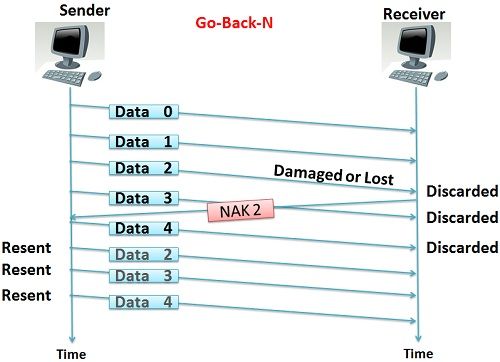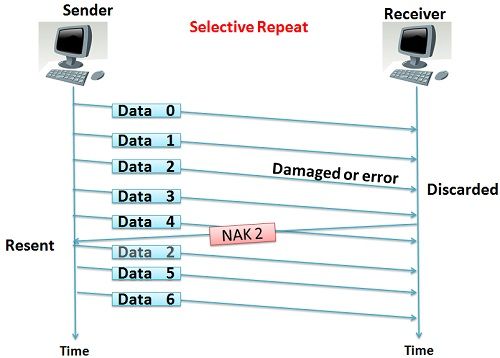Go-Back-N Protocol Vs Selective Repeat Protocol
“Go-Back-N Protocol and “Selective Repeat Protocol” are the sliding window protocols. The sliding window protocol is primarily an error control protocol, i.e. it is a method of error detection and error correction. The basic difference between go-back-n protocol and selective repeat protocol is that the “go-back-n protocol” retransmits all the frames that lie after the frame which is damaged or lost. The “selective repeat protocol” retransmits only that frame which is damaged or lost.
Key Differences Between Go-Back-N and Selective Repeat
- Go-Back-N protocol is design to retransmit all the frames that are arrived after the damaged or a lost frame. On the other hand, Selective Repeat protocol retransmits only that frame that is damaged or lost.
- If the error rate is high i.e. more frames are being damaged and then retransmitting all the frames that arrived after a damaged frame waste the lots of bandwidth. On the other hand, selective repeat protocol re-transmits only damaged frame hence, minimum bandwidth is wasted.
- All the frames after the damaged frame are discarded and the retransmitted frames arrive in a sequence from a damaged frame onwards, so, there is less headache of sorting the frames hence it is less complex. On the other hand only damaged or suspected frame is retransmitted so, extra logic has to be applied for sorting hence, it is more complicated.
- Go-Back-N has a window size of N-1 and selective repeat have a window size <=(N+1)/2.
- Neither sender nor receiver need the sorting algorithm in Go-Back-N whereas, receiver must be able to sort the as it has to maintain the sequence.
- In Go-Back-N receiver discards all the frames after the damaged frame hence, it don’t need to store any frames. Selective repeat protocol does not discard the frames arrived after the damaged frame instead it stores those frames till the damaged frame arrives successfully and is sorted in a proper sequence.
- In selective repeat NAK frame refers to the damaged frame number and in Go-Back-N, NAK frame refers to the next frame expected.
- Generally the Go-Back-N is more is use due to its less complex nature instead of Selective Repeat protocol.
Conclusion:
The selective repeat is a more efficient protocol as it does not waste bandwidth for the frames which are properly received but, its complexity and expense favors the use of the go-back-n protocol.


Comments
Post a Comment